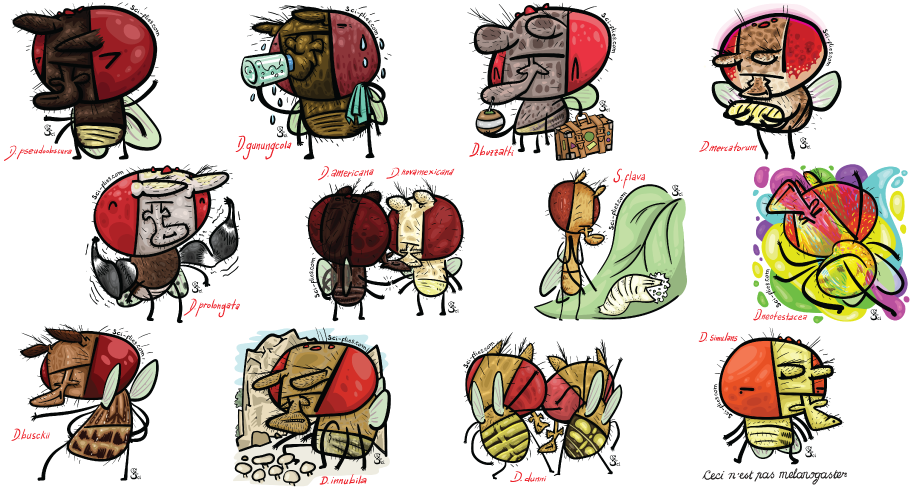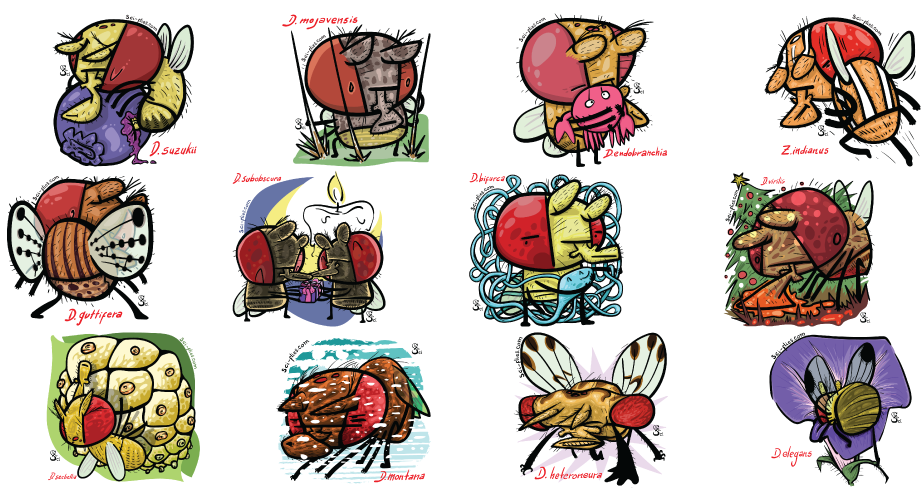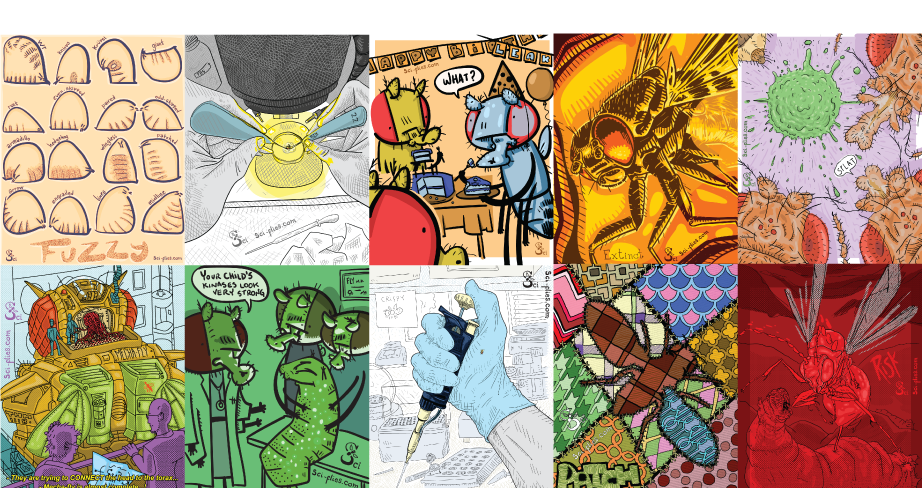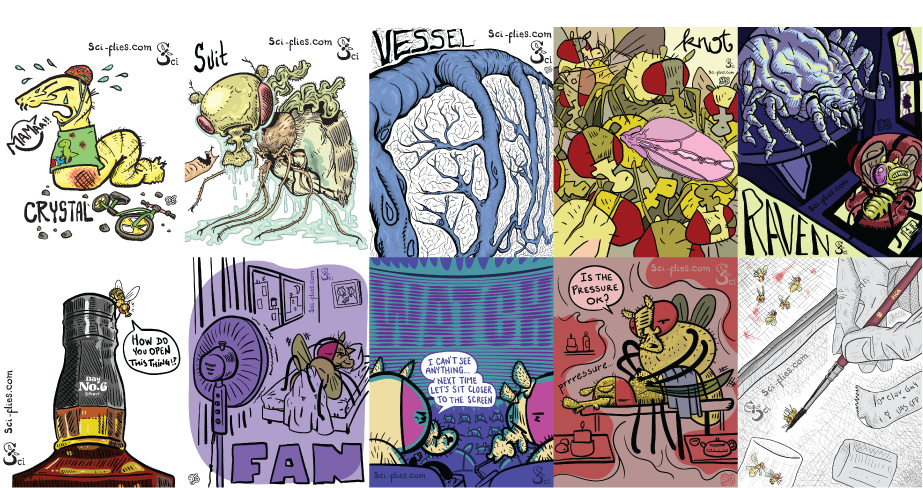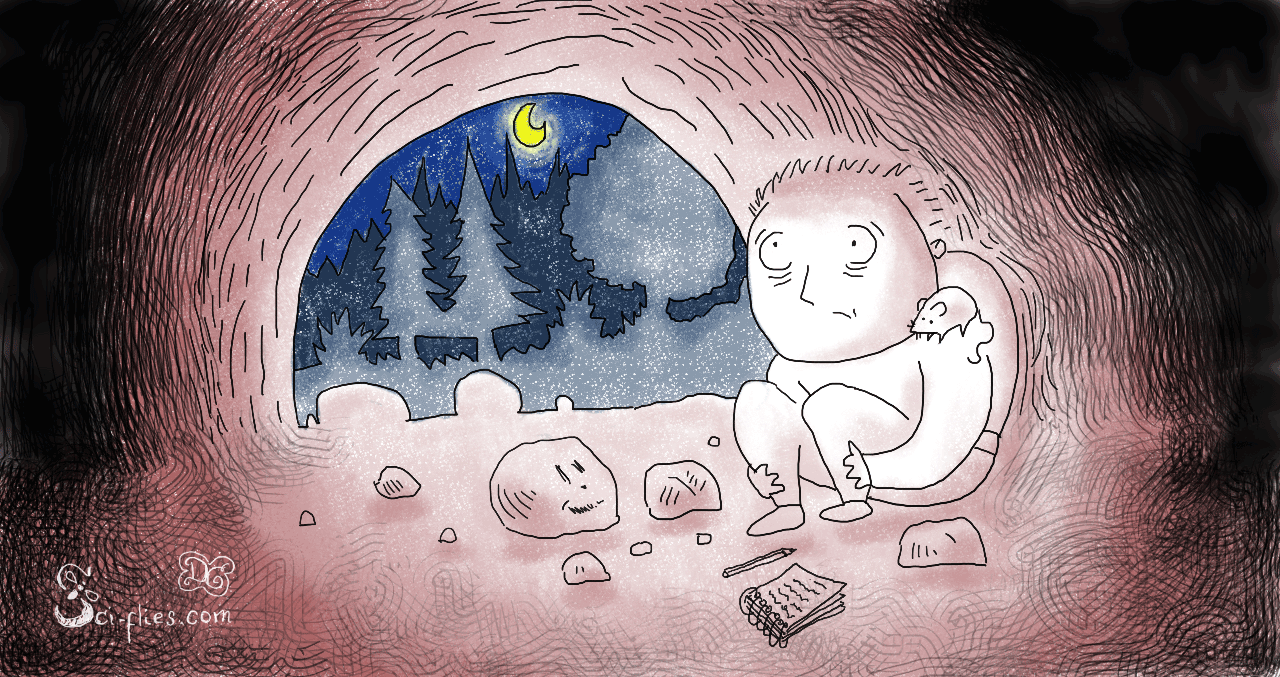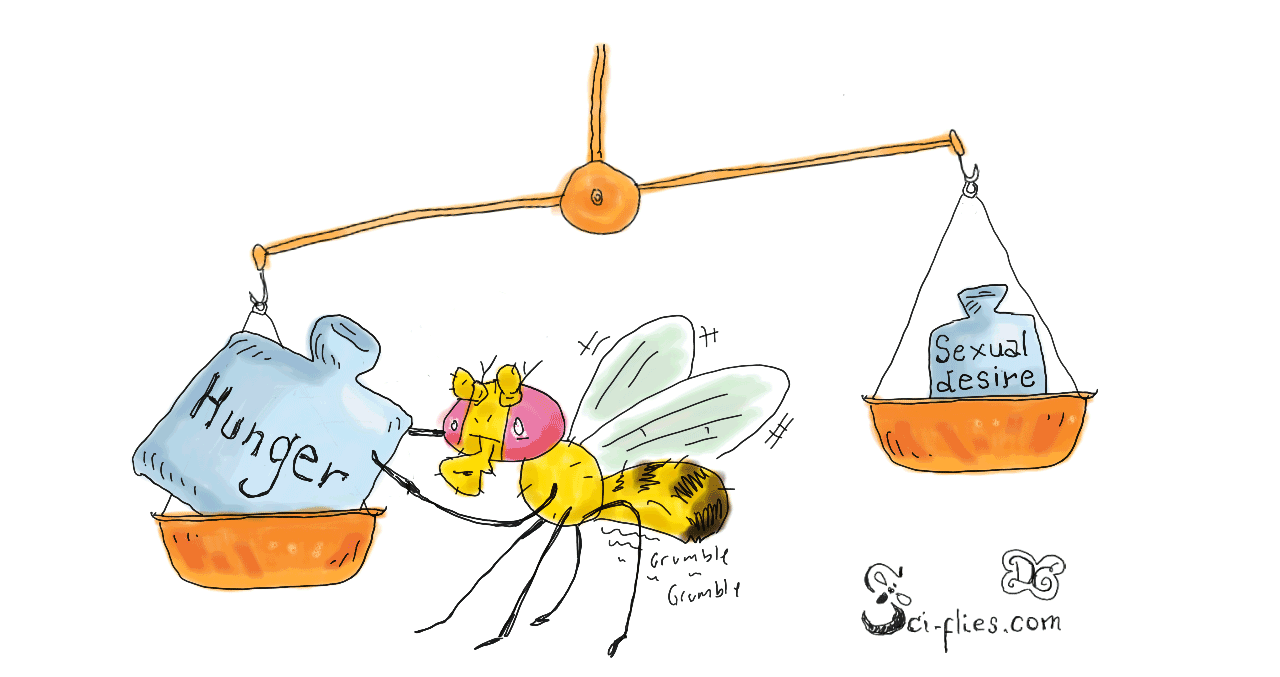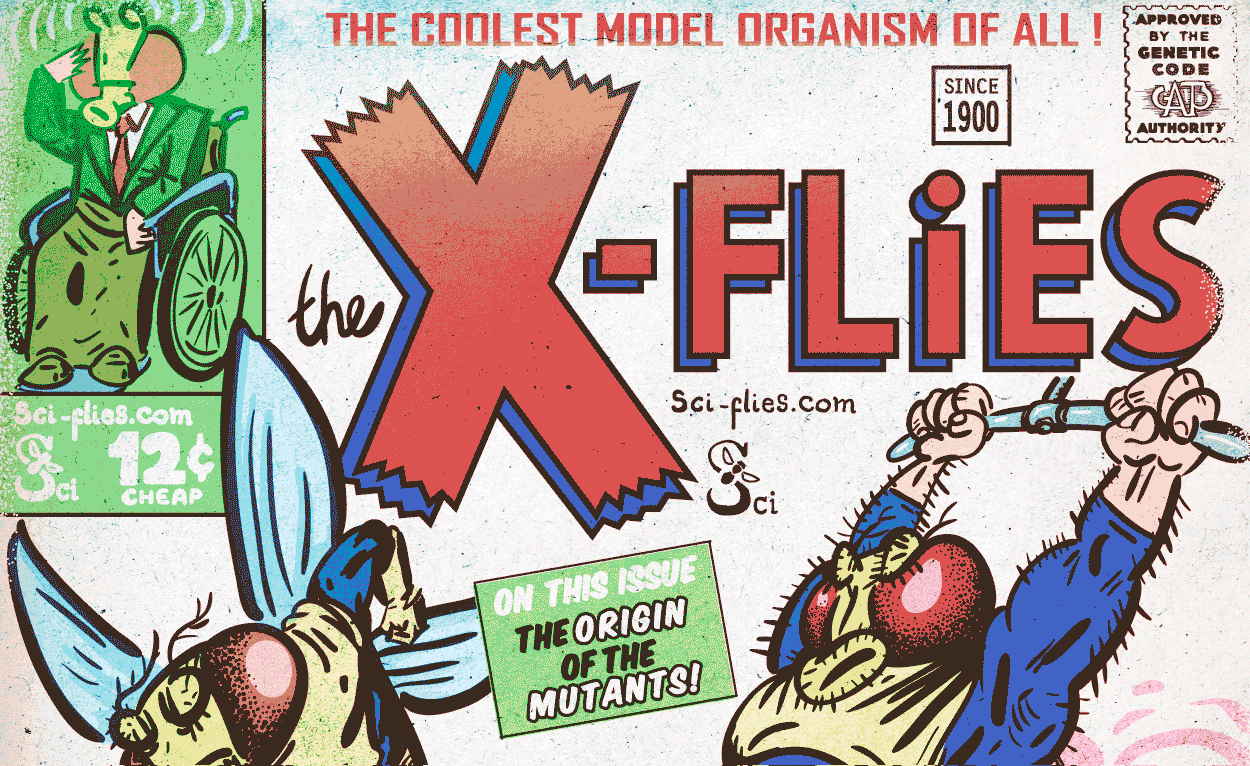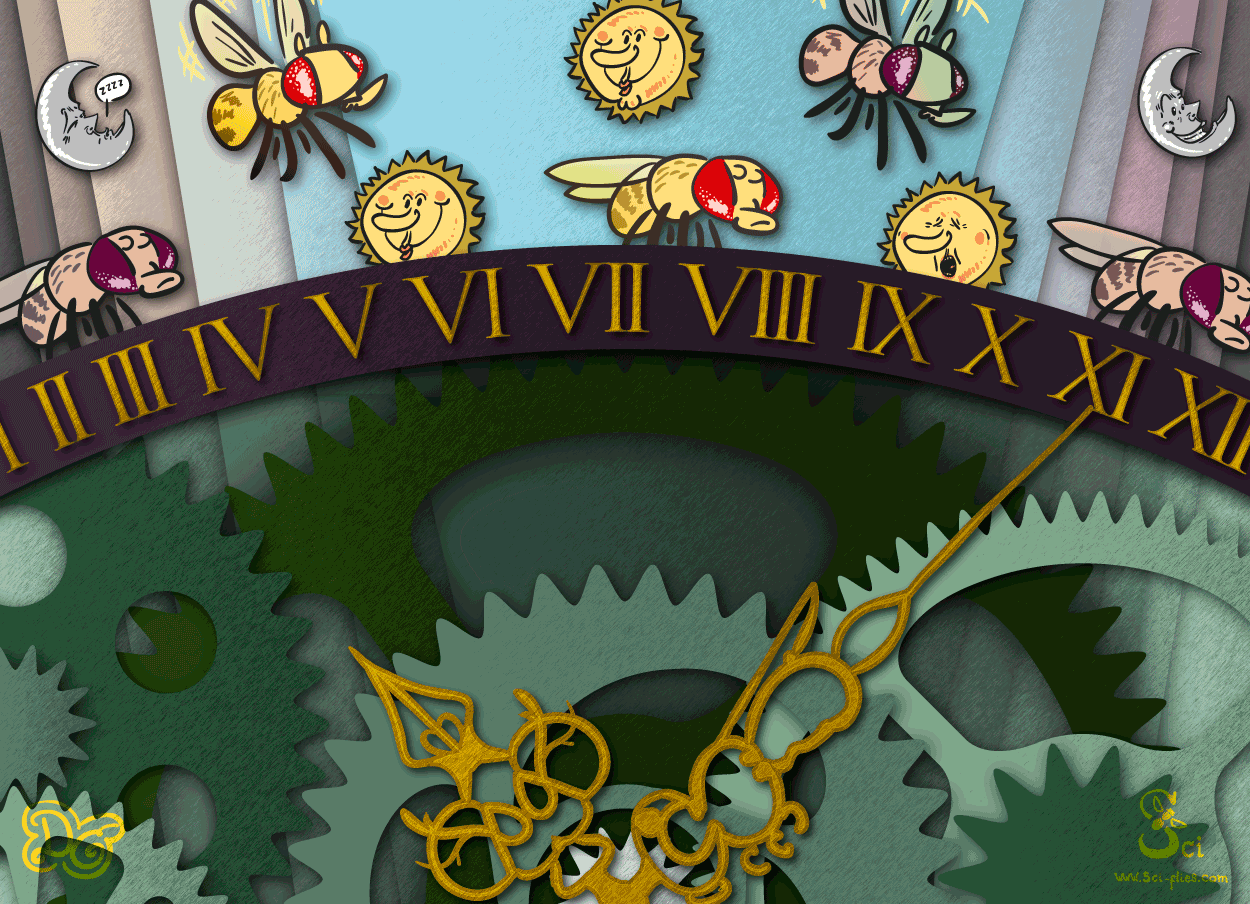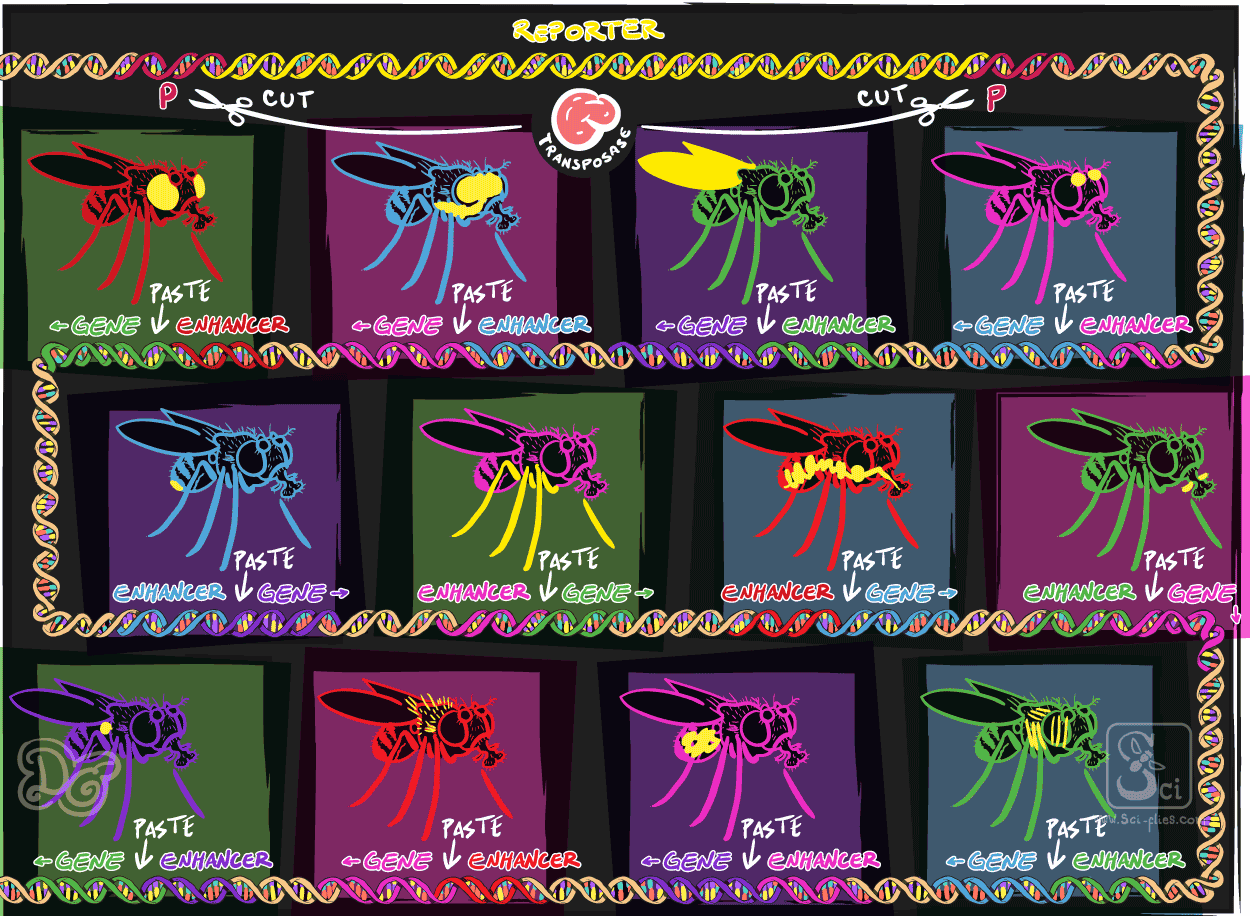Oh, Behave! - Behavioral Genetics begins
We have mentioned that variants or changes in the DNA sequence can lead to differences in observable, physical characteristics of living organisms, such as the color of the flowers of Mendel’s pea plant varieties or the color of the eyes of Morgan’s flies (we will explore the nature, origin and meaning of mutations soon).
At the same time, questions about the heredity of physical characteristics led to questions about characteristics that are not physical. Can characteristics of behavior be passed down through generations? Are behaviors themselves hereditary? Can information in DNA affect characteristics that are not physical? Does DNA contain information about behaviors? Are there genes responsible for behaviors?
In this and the next post we will explore the history of the study of the relationship between genes and behaviors.
Subscribe!
Do you like this site?
Follow us on Facebook, Twitter and Instagram!
Support us by sharing our posts!
What is behavior? What is a behavior? In biology we define behavior as the responses of a whole living organism to stimulus from inside the organism, such as the feeling of hunger or the desire to mate, or from the environment, such as a smell, heat or gravity.
The response to the stimulus can be an actual action or it can be indifference. When we talk about a behavior, we are talking about the reaction to a specific stimulation, for example we talk about phototactic behavior, that is the movement in response to light.
Early observations of behaviors
As fly researchers we spend a lot of time looking at flies. A big part of our days goes by looking at vials of flies interacting with each other. It is only natural that the early Drosophila researchers started noticing that flies had their own particular behaviors.
The first laboratory to work with Drosophila flies was the laboratory of William E Castle. They were the first to start studying mendelian genetics in animals. They were using rats and mice but became interested in flies because they were easy to breed and they wanted to do selection experiments (we’ll talk about these types of experiments later on).
At Castle’s laboratory, they observed that flies have a positive phototactic behavior, this means flies move towards sources of light. They also have a negative geotactic behavior, they move against gravity, they tend to walk upwards when they are in tubes. They also observed that flies had mechanosensory responses, that means, they can feel mechanical stimulation and respond to it (they move when they are touched, basically). They also studied olfaction, the sense of smell, and showed that flies like the smells of certain chemicals (vinegar and alcohol for example) and that they find their food mainly through smell (now we know a lot more about this and we’ll talk about it some day).
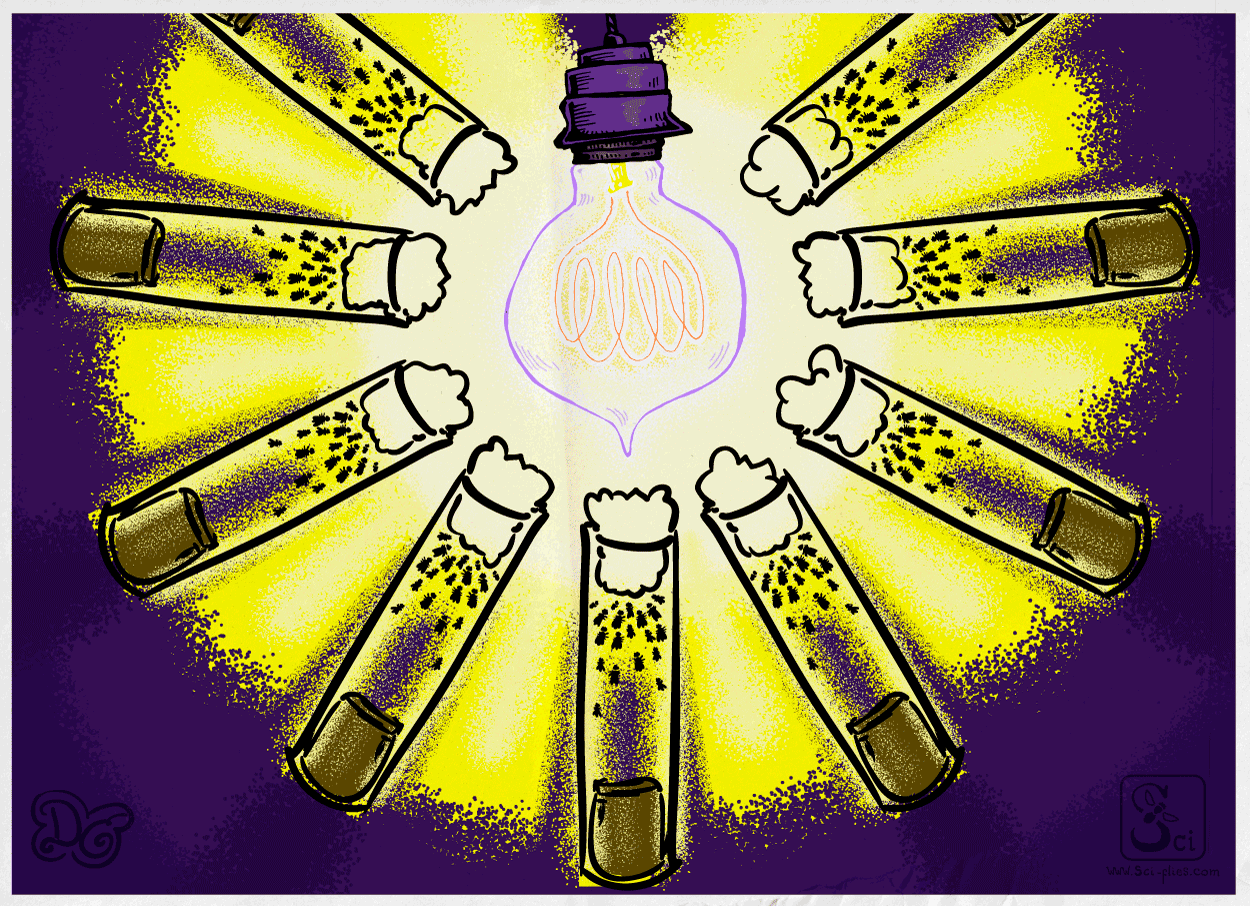
They described important stereotyped behaviors, that would be later studied in great extent. But they studied only normal flies, they did not study any genetic variant or mutants. That changed at the laboratory of T. H. Morgan, where A. H. Sturtevant observed details of the courtship behavior of flies. He saw that males stimulate females with their wings (what is known as the male love song) and that senses, other than vision, are involved in the mating rituals. He used special mutants that had mixed sexes to test how attraction influenced mating, and showed that external sexual characteristics (having female or male sexual organs) was independent of courtship behavior (a fly with female sex organs could behave as a male).
These early experiments showed that it was possible to study behavior in flies. There was the possibility of generating strict repeatable behavioral protocols and measurements based on stereotypical behaviors of the flies (we now call these behavioral paradigms). They also showed that mutations could affect behavior, hinting that behaviors had a genetic component.
But they were working blindly. They still did not know what genes were or how they functioned. How are genetics and behavior related? What are the mechanisms that link them? Those were questions for later on.
In those same early years of the 20th century, experiments conducted in rats and mice showed that behavioral characteristics (such as the ability to run through a maze) were not simple and did not conform to simple Mendelian laws of inheritance. They saw that there is a relationship between behavioral traits and genetics, but this relation is complex.
COMPLEX VARIABLE TRAITS - THE DARK TIMES OF EUGENICS
The end of the 19th century and the beginning of the 20th century lived a revolution in biology with the publication of Darwin’s and Mendel’s work and the demonstration of evolution and the mechanisms of heredity. These new developments allowed new questions and opened new paths for experiments and discoveries. On the other hand, many used these new ideas, to justify and push old prejudices towards other human beings, basing them on pretended science, ultimately leading to very dark times.
In the last part of the 19th century Francis Galton, a very prolific, intellectually restless, cousin of Charles Darwin became interested in heredity of behavioral traits in humans. The publication of the Origin of the Species and Darwin’s explanation of evolution made a great impact on him and led to his preoccupation on the improvement of mankind (a very specific British type of mankind), and the proposal of the selection of the “best” individuals for procreation. He called this subject Eugenics (which means well-born).
Of course, to determine which individuals were the best, the desired characteristics would have to be measured and quantified. He developed the methods to measure and quantify the traits he was interested in and most importantly, the methods to analyze the data generated (he developed statistical methods such as the analysis of correlations and the measurement of variability through standard deviation).
After the rediscovery of Mendel’s work most scientists working on genetics and inheritance did not agree with eugenicists. Hardly any scientific evidence could be shown to support eugenicists’ views, and many like Morgan even pointed at the evidence against the possibility of ascribing complex human variable traits to single Mendelian factors. The supporters of eugenics were fanatics that interpreted data to fit their bigoted worldview and used the name of science to justify the mistreatment of other human beings.
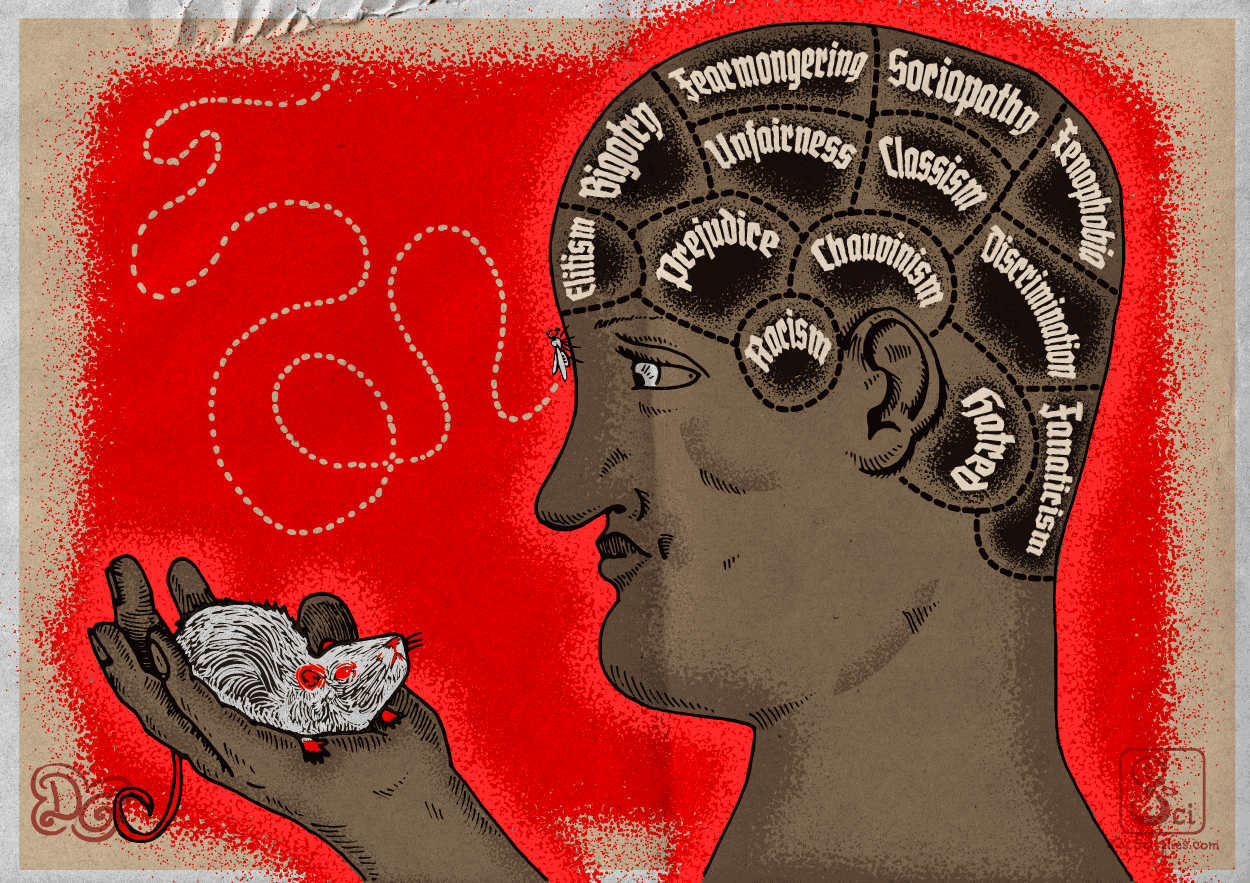
Eugenics grew into political movements in many countries. Their proponents were very vocal, while more serious and critical scientists tended to view involvement in politics as something beneath them and did not battle against eugenics in the political arena.
It could be argued that, since at that time social sciences like psychology and sociology were not established as they are today the conceptual tools to fight against eugenicists did not yet exist. But science was being twisted and used to justify the suffering of human beings based on prejudice. Eugenics fed antiimmigration policies, segregation of people according to categories of perceived physical or social characteristics (so called “races”) and state programs regarding natal care, the handling of people with mental illnesses and marriage laws. This led directly into genocide in Nazi Germany.
Continuing with the subject of quantification of characteristics, it was later on that RA Fisher, JBS Haldane and SG Wright (interestingly Fisher was a eugenicist and Haldane a fervent opponent) some of the most important scientists in the 20th century, developed the tools to better analyze the genetics of complex variable traits. They combined statistical analysis with mendelian laws of inheritance and Darwinian evolution (evolution through selection, their work allowed to put numbers to Darwin’s proposals and measure evolution happening). Their work allowed to analyze how the proportions of gene variants are distributed in populations through time, and how characteristic that vary continuously can be followed through generations (for example height or weight, as opposed to traits like Mendel’s flower color that have discrete states: purple or white). Their work set the foundation for modern statistics.
Galton and some of the other eugenicists were brilliant scientists, but will (and should) always be overshadowed by the memory of the suffering their interpretations and ideas produced. With that in mind we can assess their contribution to the subject of the genetics of behavior while condemning their prejudiced worldview. They stirred interest in the heredity of behavior and established a systematic and methodic approach to the subject, by taking measurements and developing techniques to analyze the complex data. The further development of the analysis of these types of complex data was revolutionary for Biology and many other sciences.
(On a lighter note, Galton also developed the scientific way to cut a cake)
BEHAVIORS AND SELECTION EXPERIMENTS
The eugenics movement lost strength after social sciences, psychology and behaviorism rose to prominence. Behaviorists proposed that genetic background and internal state of individuals were irrelevant to behavior, and that behaviors came exclusively from the influence of the environment and experience. Also, the results of the implementation of Nazi eugenics in Germany during the 30s, which led to genocide and war, showed how bad the idea could turn out to be (something we should constantly remember).
In this context, in the 50s and 60s Jerry Hirsch, a psychologist started experiments in Drosophila flies. He had worked with psychologists Tolman and Tryon (those who had studied the maze-running rats in the 20s) and was later a disciple of Theodosius Dobzhansky, an evolutionary biologist that would later be one of the founders of what is called the modern synthesis of evolution, a package that combines Mendelian genetics, Darwinian evolution and the mathematics developed for the analysis of variation to explain how evolution works (it would be interesting to do a future post on this subjects, where Biology mixes with philosophy). Hirsch had a background in psychology and evolutionary thinking.
Hirsch devised an idea to find how genes affected behavior. To find parts of chromosomes that were involved in defining behaviors. Like his earlier mentors he used selection experiments. In this type of experiments, you analyze a group of individuals for a behavior, for example geotaxis in flies. Then observe which individuals perform better or worse and pick them to breed and get a new generation, if the behavior is genetically determined you would expect the next generation to behave like the parents. Then repeat this for several generations, selecting always the best of the best and the worst of the worst.
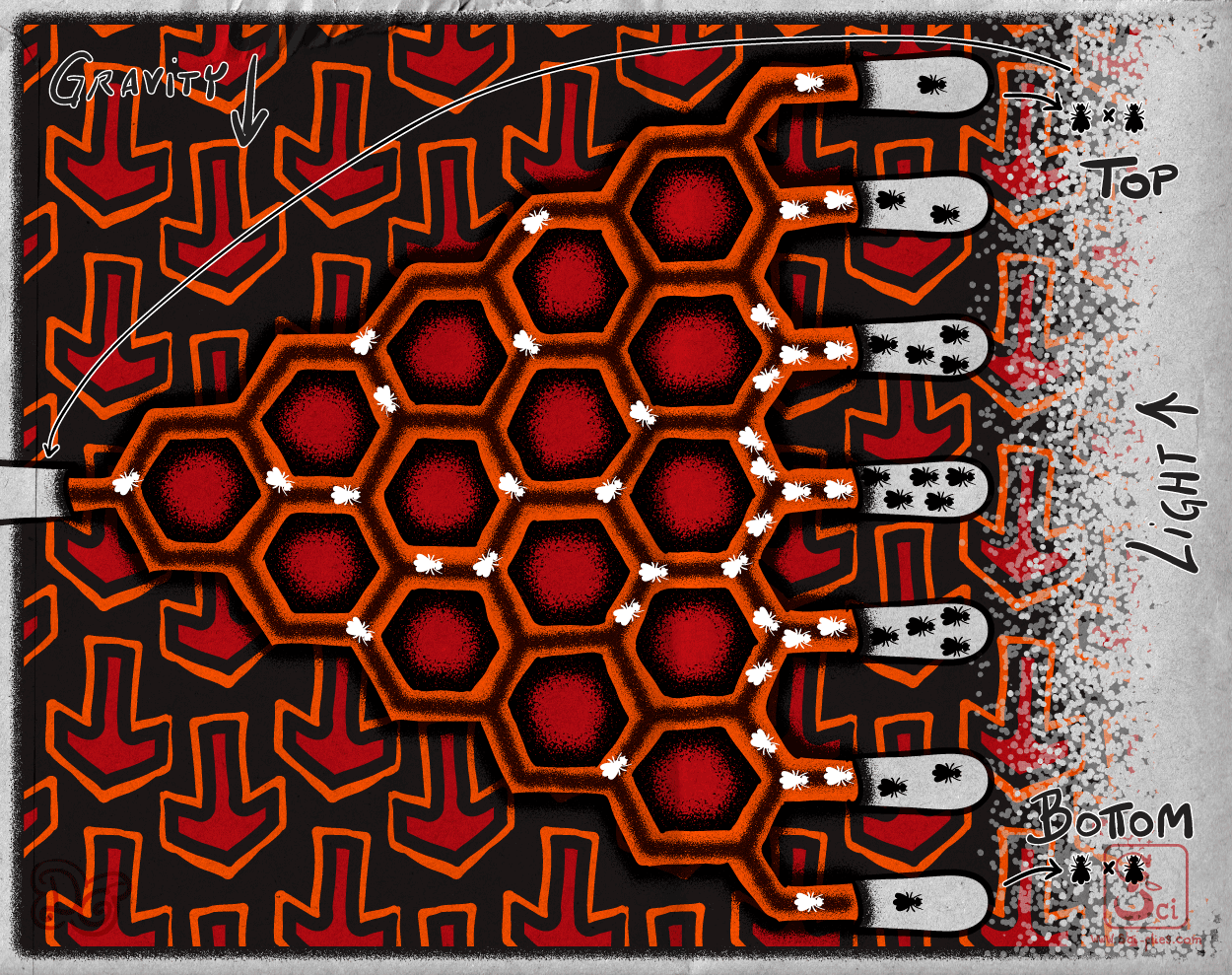
Hirsch constructed a maze-like device that would sort flies according to their response moving up against gravity (negative geotaxis). The device had passages that would branch up or down at regular intervals. Flies then would have to go up or down those passages, the ones that arrived all the way to the top at the end were the better performers (because they always chose to go up), the ones that arrived at the very bottom were the poorest performers (they always went down).
So, through these selection experiments he would generate breeds of flies that behaved in a particular way in geotaxis. Then through genetic crossings he would isolate the different chromosomes and parts of the chromosomes and test which contributed most to the performance in behavior. His experiments ran for hundreds of generations. He showed that there were many parts of the chromosomes that were involved in determining and modulating the behaviors. Many others used the same approach to test even more complex behaviors, such as conditioning and memory.
This type of analysis bridged the ideas of genetic determinism of behavior with the complexities of the variability of behavior. They showed that there is a genetic component to behavior that can be pinpointed, but behaviors are variable in a population. More importantly, this gave an evolutionary context to the study of behavior. Populations can have an average behavior, but within populations there was variability, and individuals could have a broad range of behavioral scores. Variability is important for adaptation of the population to changing environments.
Theses studies underlined how behaviors are determined by many genes interacting in complex ways.
It is important to note that until this point in history, the nature of the gene and how it works was still unknown or being discovered. The specific mechanisms for genetic control of behaviors (or genetic control of anything else) were not even imagined.

Now a days we have a good understanding of the basics of gene function (and new details are constantly being discovered). We have talked about the most basic aspects.
At the time of Hirsch’s studies, identification of genes was not possible. Now we have a complete standard sequence of the Drosophila genome and we know the sequence and position of every gene in the genome (or most of them).
When we identify a section of the genome that is related to some behaviors, we can determine which genes are in that region and in this way start more individualized analysis (for example using some of the transgenesis techniques or gene expression systems).
The type of selection study that Hirsch did, is still done but now it is coupled with more modern techniques. To know which parts of the genome (parts that may contain genes) are related to the behavioral characteristics selected (for example better or worst geotaxis performance), random variable sequences of the genome can be used as markers and followed through generation using molecular biology techniques. In this way better resolution can be achieved and more defined regions can be determined.
Understanding gene function is understanding how the products of genes -proteins and RNA- work, when and where they are produced, how their production is regulated and controlled, how they interact with other proteins, RNAs and chemicals in the cell, what effects they produce in the cell and how impacts on cell function and on the interaction amongst cells and organs. And in the case of behavior, how all that is triggered by perception (a stimulus) on one side and how it translates to movement (a response) on the other.
In the next post we will continue with this subject, and go into the origin of neurogenetics, the final discovery of individual genes that affect behaviors.
Interesting References
I based most of the text on a very nice review/account by Ralph J. Greenspan (Current Biology, 2007, vol 18(5) R194-R198) and a more technical review (J. Neurogenetics, 2003, vol. 17 pp241–270). I also used a review by Tim Tully (PNAS, 1996, vol. 93, pp13460–13467) and the many Wikipedia articles on these subjects.
Recent Posts
I could not find a simple video for phototaxis behavior. But on this one I understand you can see a green or magenta block on the side were they are shining a light and how flies move towards the light (although the person who posted the video did provide any explanation).
I like this YouTube channel about Mathematics a lot. I really recommend you watch their videos. They have also very nice associated channels for Physics, Astronomy and Chemistry.


